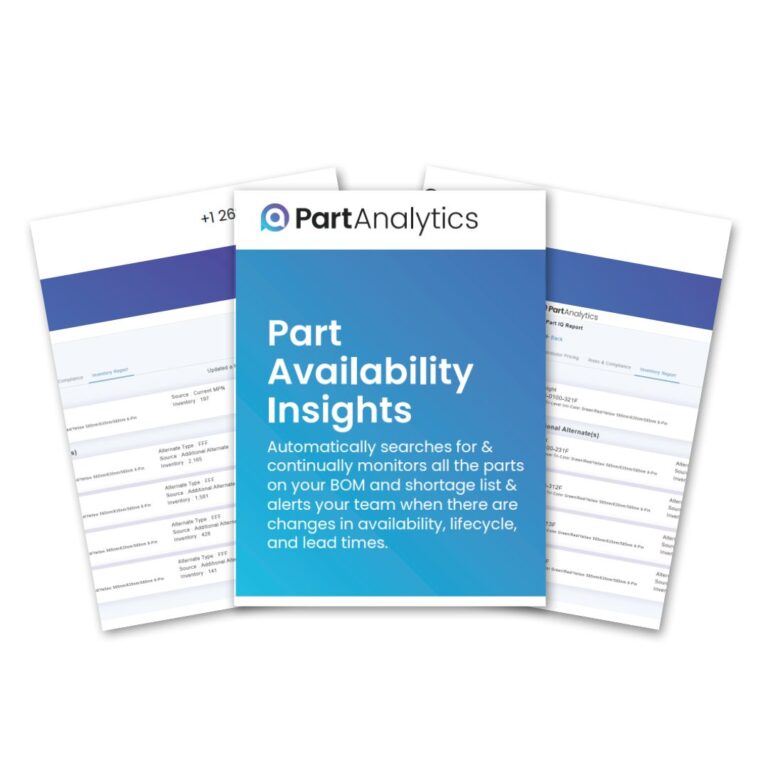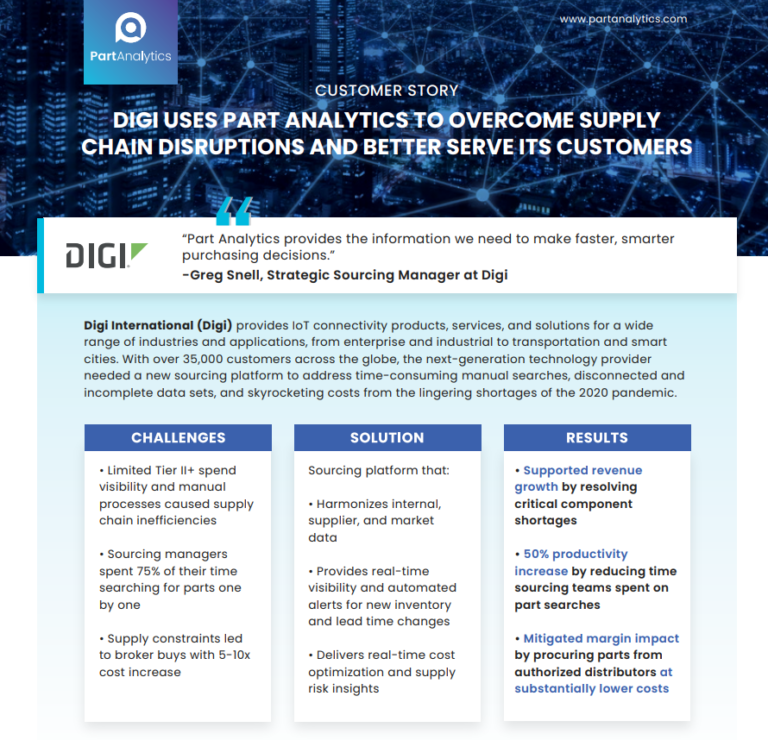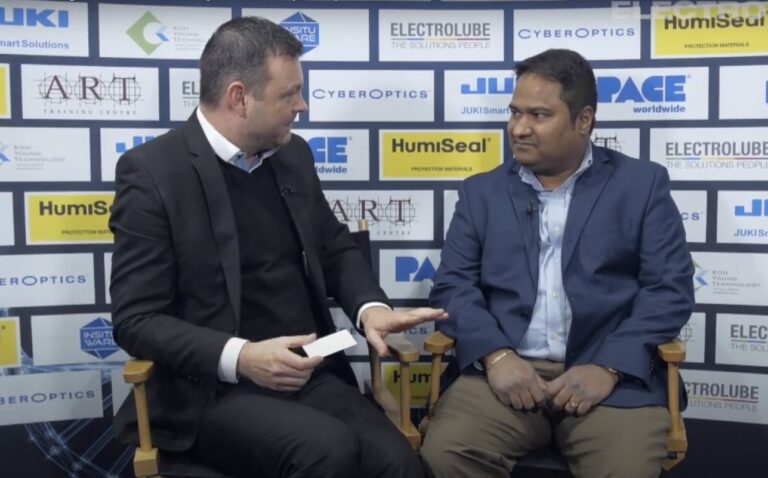You’re fulfilling a fairly unique requirement in in the industry. You know we’ve gone through a couple of years now of component shortage issues and it’s very difficult to get an overall, holistic view of where to locate and find parts. Explain how the Parts Analytics system works.
Part Analytics is a SaaS platform (cloud-based) that helps contract manufacturing, EMS companies, and OEM’s to get pricing information from all the distributors and the risk information around supply chain risk, based on obsolescence or end of life in a few minutes.
Customers can upload their bill of materials and get all of that information in their hands. Our data is refreshed daily or weekly, so they get the latest industry information & market intelligence piece.
So, they upload their BOM. It takes a look through the BOM, and then on the dashboard comes up with a a risk calculation for that BOM. Explain how that works and how that would fit into their operations.
Prior to starting this company, I was in sourcing for a large Fortune 200 manufacturing organization, and one of the issues is around the data is that it’s spread across multiple systems and spreadsheets. If you’re managing tens of thousands of parts, it’s hard to figure out which parts you should focus on.
With the BOM IQ module, procurement leaders or purchasing departments can quickly see which BOMs are the highest risk from a supply chain standpoint, based on part lifecycle, availability, or lead times. It also checks compliance risk (RoHS, et al), as well as sourcing risk of whether it’s single source versus multi-source. So, we calculate the risk score for each part and then aggregate that at the Bill of Material level, so they can prioritize the BOMs that they need to focus on.
So, they’re going to focus on the BOMs with the lowest risk and leave time to be able to source the parts they need for the ones that are at high risk?
Yeah, that’s right. And along with that, we also show pricing information, potential savings from that. We pull our pricing information from all the distributors so they can show they can see what’s the lowest price available.
But we also show network networking or benchmarking pricing where an OEM that’s buying a part or a contract manufacturer that’s buying apart, they can compare that to the average price paid by other people for that same part and see what’s opportunity for negotiation with suppliers.
Have you saved some of your customers a lot of money doing that? Presumably, you’re looking at the lowest sourced parts and lowest cost.
Yeah, based on our experience and even our initial customers and pilots we’re doing with large OEM’s on average, we see 15% savings or material cost and proactive mitigation and supply chain risk. 15% is average. Some customers we have seen 30% savings versus what they’re actually paying today.
That is incredible. Now you mentioned that you’re obviously I’m comparing the prices from the big box companies, but you’re also looking at single source from different places. So, you’re taking a fairly wide view. How many different component manufacturers globally are you tracking?
We have data from all the major manufacturers are on the back end. We have access to more than 500 million parts on the back end. We refresh the data daily or weekly on around pricing as well as risk.
The system is subscription driven system. How does that work?
It’s an annual subscription. For a contract manufacturer, we price it based on number of BOMs that they upload to the platform. For the OEM customers, it’s a combination of number of BOMs and the total spend on the platform.
We don’t limit the number of users on the platform because we want to democratize the data within the company. So anyone can have access to the data and everything in it. It’s a single source of truth for all the employees within that company. Anyone can access the data and see what’s going on within their company. Also look at what’s going on with the market data and market intelligence.
What about the obsolescence? What do you bring to that that issue because that’s quite a growing issue in in different parts of the industry.
On the obsolescence side, we actually give insights on the predictive information around when a part could go potentially end of life or obsolete so that we have enough time to react.
Typically, what happens is by the time the OEM’s get notification, it’s too late. They only have one option: to spend millions of dollars buying 10 years, 20 years of inventory. Versus doing that if they get two years upfront notice, they can actually go and redesign the product.
Along the same lines, even lead times have been really important over the last couple of years, especially around passive components like MLCCs, where the industry has seen a lot of issues around availability and allocation regime where part manufacturers are allocating inventory to OEMs.
So, if there is any productive insight on that, they can actually better plan for that.
If someone is coming to you for the first time and considering to use your service, can you give them a demonstration? How do they how do they test the services that you have to offer?
Typically, it starts with the demo of our platform and then right after that we could actually do a proof of concept where we can run their BOMs on our platform and show the results, which are more around savings and other risk opportunities. Once they see the ROI, from then on we can talk about annual contract.





